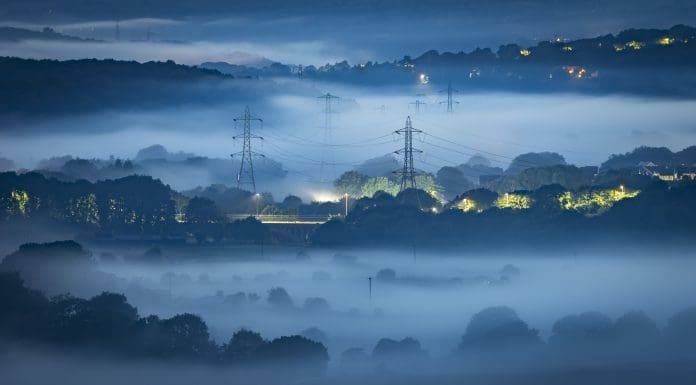Oliver Johnson, assistant planner planning, environmental consenting and communities at AtkinsRéalis, reflects on the UK energy crisis and what the new Government plans to do differently
The UK’s electricity network is reaching capacity, and as the transition to clean energy gains momentum, demand is set to rise by nearly 65% over the next decade. In parallel, the new Labour government has set an ambitious target for zero carbon electricity by 2030.
Plenty of good work is going on to move away from the UK’s reliance on volatile fossil fuels towards a more sustainable approach, with a marked increase in the generation of renewables – particularly wind and solar – to create cleaner and cheaper electricity.
Despite this, we have seen large-scale renewables projects struggling to get off the ground due to a range of factors, including the complexities of the consenting system and lack of public support, along with supply chain issues, skills shortages and investment uncertainty. All of this means we’re slowing our progress to net zero – at a time when we desperately need to speed up.
While scaling up generation is part of the puzzle, without capacity for efficient transmission, the benefits of any increase in generation will fail to materialise. The transmission grid established back in the 1950s is simply no longer fit for purpose, and huge investment in energy infrastructure is required to realise industry ambitions and government targets.
It’s clear that as we move towards a complex and multifaceted blend of renewable energy sources – and away from the relative simplicity of fossil fuels – we must address top-level coordination, abandon siloed approaches to individual projects and find new ways to successfully deliver an upgraded energy network that can propel progress.
The importance of impartial oversight
In response to the energy crisis, in 2021 Ofgem and (the then) Department for Business, Energy and Industrial Strategy (BEIS) recommended the creation of an independent and publicly-owned body to implement a whole-system approach to UK energy.
In a significant shift towards public ownership, the Energy System Operator (ESO) – part of National Grid – will be replaced by a publicly-owned and fully independent National Energy System Operator (NESO). Set to launch in later this year, NESO will work to facilitate net zero and oversee upgrades to create a resilient, sustainable and affordable energy system for the future.
It is hoped this public body will bring a new level of impartiality, as well as much-needed strategic oversight and coordination, to instil a greater sense of direction and urgency in the sector; ultimately getting us closer to where we need to be in terms of net zero and energy security.
A new direction for UK energy
The UK’s windy coastline puts it firmly in the top ten countries for renewable energy generation, with nearly 60% of its energy coming from renewables. But the UK’s recent failure to consistently attract private investment, and a funding model that sometimes doesn’t stack up, means projects have stalled and we’re lagging behind in the race to net zero.
In 2023, an offshore wind auction failed to attract any bids whatsoever. And in 2019, private investment in the development of the Wylfa Newydd nuclear power station was cancelled after years of works and £2bn being spent on it. Recently the large-scale gigawatt nuclear power plant has been reselected as the government’s preferred site, and there’s a tangible feeling that the past five years have been wasted.
Market uncertainty, challenging costs, consenting issues and a lack of grid capacity mean the UK energy sector is on the back foot, facing an uphill struggle to step up momentum and meet its targets around decarbonisation.
With quiet optimism surrounding the new-look NESO, and a new Labour government in situ, are we about to see a more general move towards public ownership in UK energy?
A unique opportunity to challenge the UK energy crisis
With huge announcements made during the first few weeks of government, Keir Starmer has not only scrapped the onshore wind development ban in England, but committed to doubling onshore wind energy – and quadrupling offshore wind energy – by 2030. This signifies a once-in-a-lifetime expansion of renewable energy and offers an unparalleled opportunity to change the way we think about energy in the UK.
While it’s clear this is not an extension into full nationalisation, Labour’s plans for Great British Energy certainly signify a shift in approach, embracing collaboration and offering ownership of UK energy back to the British public.
Unlike similar schemes in Europe, Great British Energy will not generate energy itself, but instead invest public money in a range of renewable energy generation projects. As an investment vehicle with the public interest in mind, this government-backed initiative promises to bolster much-needed investment confidence across the private sector.
It could be just what’s needed to build the resilience to proceed in the face of adversity, ultimately delivering the funding required to take projects to completion and meet our ambitious targets – whatever the weather.
The recent election results could suggest the public is behind Labour’s move towards publicly-funded renewables. Spurred on by this, perhaps government will now have the drive and the confidence to go further and advocate for full public ownership of renewable energy generation.
Along with the independent strategic oversight of NESO, the launch of Great British Energy signifies a positive move towards a more blended and sustainable funding model that encourages public-private partnerships, has the potential to sidestep current investment challenges and expediate delivery. The success of Great British Energy and what happens next is pivotal for a progressive, efficient and reliable future for UK energy.
The post Addressing the UK energy crisis in a new political landscape appeared first on Planning, Building & Construction Today.


